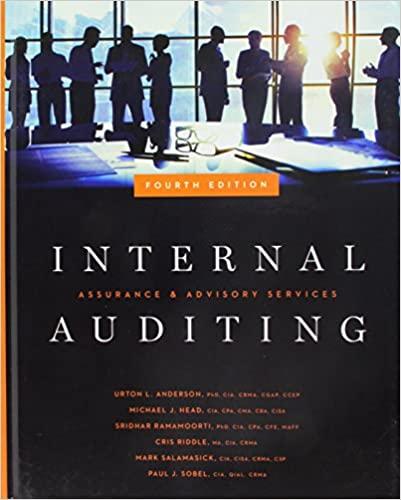Question
Lewis Corp. is thinking about opening a basketball camp in Texas. In order to start the camp, the company would need to purchase land and
Lewis Corp. is thinking about opening a basketball camp in Texas. In order to
start the camp, the company would need to purchase land and build eight basketball
courts and a dormitory-type sleeping and dining facility to house 110 basketball players.
Each year, the camp would be run for eight sessions of one week each. The company
would hire college basketball players as coaches. The camp attendees would be male and
female basketball players ages 12 to 18. Property values in Texas have enjoyed a steady
increase in value. It is expected that after using the facility for 20 years, Lewis can sell the
property for more than it was originally purchased for. The amounts shown on the next
page have been estimated.
Cost of land $200,000
Cost to build dorm and dining facility $350,000
Annual cash infl ows assuming 110 players and eight weeks $700,000
Annual cash outfl ows $570,000
Estimated useful life 20 years
Salvage value $700,000
Discount rate 12%
Instructions
(a) Calculate the net present value of the project.
(b) To gauge the sensitivity of the project to these estimates, assume that if only 90 campers
attend each week, annual cash infl ows will be $570,000 and annual cash outfl ows will
be $508,000. What is the net present value using these alternative estimates? Discuss
your fi ndings.
(c) Assuming the original facts, what is the net present value if the project is actually
riskier than fi rst assumed, and a 15% discount rate is more appropriate?
(d) Assume that during the fi rst fi ve years the annual net cash infl ows each year were only
$65,000. At the end of the fi fth year, the company is running low on cash, so management
decides to sell the property for $668,000. What was the actual internal rate of
return on the project? Explain how this return was possible given that the camp did
not appear to be successful.
| (a) Original Estimates | Cash Flows | x | 12% Discount | = | Present Value |
| Present value of net annual cash flows |
| x |
| = |
|
| Present value of salvage value |
| x |
| = |
|
| Capital investment |
|
|
|
|
|
| Net present value |
|
|
|
|
|
| Recommendation:
|
| (b) Revised Estimates | Cash Flows | x | 12% Discount | = | Present Value |
| Present value of net annual cash flows |
| x |
| = |
|
| Present value of salvage value |
| x |
| = |
|
| Capital investment |
|
|
|
|
|
| Net present value |
|
|
|
|
|
| Recommendation:
|
| (c) 15% Discount @ Original Estimates | Cash Flows | x | 15% Discount | = | Present Value |
| Present value of net annual cash flows |
| x |
| = |
|
| Present value of salvage value |
| x |
| = |
|
| Capital investment |
|
|
|
|
|
| Net present value |
|
|
|
|
|
| Recommendation:
|
| (d) IRR 15% Factor | Cash Flows | x | 15% Discount | = | Present Value |
| Present value of net annual cash flows |
| x |
| = |
|
| Present value of salvage value |
| x |
| = |
|
| Capital investment |
|
|
|
|
|
| Net present value |
|
|
|
|
|
| Recommendation:
|
Step by Step Solution
There are 3 Steps involved in it
Step: 1

Get Instant Access to Expert-Tailored Solutions
See step-by-step solutions with expert insights and AI powered tools for academic success
Step: 2

Step: 3

Ace Your Homework with AI
Get the answers you need in no time with our AI-driven, step-by-step assistance
Get Started


